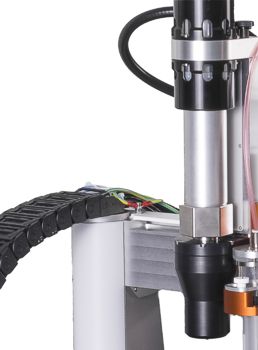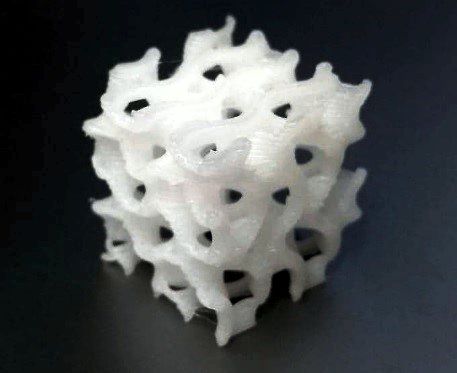Melt Deposition Modelling of Bioactive Organic/Inorganic Hybrid Scaffolds:
Hybrid materials/ blends offer more potential to mimic artificial bones because of better biological/physical properties. E.g. cell adhesion might be much better than for pure PCL. 3D printing of such material, however, could be challenging due to difficult viscoelastic properties. A team at LPC lab (University of Clermont, France) develops hybrid materials consisting of PCL and bioactive glass, respectively. They succeeded in 3D printing of these materials using the mechanical HT-extruder (High-Temperature, High-Pressure Extruder) on a GeSiM BS3.2 bioprinter. Click here for more details.

Mechanical HT-Extruder on a GeSiM BS3.2

Internal porous structure of a hybrid scaffold
 Courtesy of: Dr. Lukas Gritsch, Prof. Jonathan Lao, Universite Clermont Auvergne, Laboratoire de Physique de Clermont, CNRS/IN2P3, Biomaterials group, France
Courtesy of: Dr. Lukas Gritsch, Prof. Jonathan Lao, Universite Clermont Auvergne, Laboratoire de Physique de Clermont, CNRS/IN2P3, Biomaterials group, France
